A couple days ago upon returning from China I got the chance to spend a bit of time checking out a new to the market but not new to the sport ANT+ enabled power meter. The unit operates on much of the same principals as a cycling power meter in terms of how it measures power (strain gauges), how it transmits power (ANT+), and how it displays power (watts). It even shows left-right power (Power Balance) and stroke rate (cadence) – just like many new power meters.
The simply named ‘Kayak Power Meter’ by a New Zealand company called ‘One Giant Leap’ has actually been in use for well over a year now. In fact, I originally talked to the company over two years ago when they first were testing out units. However shortly after our initial discussions the New Zealand National Team (for kayaking) secured exclusive rights to the platform until the conclusion of the Summer 2012 Olympics in London.
As you’ve seen recently with other sports technology products (such as Alphamantis with the Canadian Cycling team), it’s not uncommon for national teams to get exclusive use of up and coming technology prior to major sporting events.
During the lead-up to the games they (the NZ National Team) had a version of the product that allowed them significant analytical capability, but also required a bit more analytical processing power (in terms of human understanding) than you’d want in a general purpose consumer product.
So following the Olympics last summer they’ve revamped the product and focused it more in line with the level of detail that traditional cycling power meters have, and with a similar target audience (amateur and professional competitive athletes).
Given the parallels to cycling, I thought it might be interesting to get a walk-through of how the system works.
Just like a bicycle the power meter is really only one component of your entire ‘ride’ – the same is true here. A consumer would purchase the the shaft – which is the long skinny part. As part of the ordering process they specify stiffness and length (and a specific shaft manufacturer for custom orders), sorta like on bike power meters you may specify crank length or type. The consumer then provides their own blades (that’s the part that pushes water), and then glues them on like any other blade would be attached.
Within the shaft each side contains two bumps. These bumps are where the sets of strain gauges are located.
It’s these strain gauges that measure the power. A single bump is known as a ‘channel’ for them, and each channel contains multiple strain gauges. And each half of the paddle contains two sets of channels (so it can measure left and right independently).
This is combined with what they are dubbing as ‘inertial sensors’, which is the patented part of the platform that consists of sensors such as accelerometers, gyroscopes, etc… (they wouldn’t provide specifics in this area). Essentially, part of the ‘magic’ that allows them to determine aspects such as stroke rate. That’s all inside the shaft just beyond the bumps:
Finally, this all connects to a battery and ANT+ transmission system that gets a 10-12 hour battery life in normal transmission mode. The battery simply plugs in via USB. As you see below, the kayak paddle separates to access the battery port (and for travel/etc…).
Here’s where the chip is, and what it looks like if it were taken out:
You’ll just use a small hex-wrench to tighten everything together (they use this versus a lever because it ensures you don’t change any of the length dimensions ‘easily’):
The system needs a few basic configuration points to be able to correctly measure power. Unlike a traditional cycling power meter however, there is no further static calibration method. Instead, this comes via inputting specific measurements of the blades. This is done by selecting ‘known’ blades which have a pre-measured surface area for them. Though, if a blade isn’t in their existing database of blades, then there’s a simple math formula to determine the values required.
In addition to specifying the blade type, you’ll also specify measurements around the length of the blades to each hand position and the datum line.
Interestingly in the lead-up to the Olympic games they said the NZ team occasionally did tests with coaches in boats next to them where the coaches had the athletes change their hand-position and then using a laptop in the boat modified the distance settings, thus being able to test different hand position power output values.
This one-time procedure is done on PC software (no Mac software yet, though if they see demand for it they said they’ll create it), and is transmitted with a standard ANT+ USB stick (just like downloading from your Garmin Forerunner watch). Once the one-time procedure is completed, there’s no frequent need to access the software (meaning, no continual calibration).
They also noted that they are looking at potentially developing an Android app (they have a test one today) that would enable this as well for those with supported ANT+ enabled Android phones or USB dongles. They’ve also looked at doing the same on the iPhone/iPod/iPad platform with the Wahoo Fitness ANT+ adapter.
Once the configuration is complete the system looks identical to that of a regular cycling power meter. Thus most of the athletes today use Garmin devices today to view the power. He noted the FR310XT and 910XT were most popular due to the waterproofing nature of them (being triathlete watches), though the Edge 500 was also popular because it could gather left/right data and was relatively easy to mount (the FR910XT can as well do left/right power).
The platform measures power at 50 times per second within a given stroke (though they can configure up to 100 times per second). From there it’s down-sampled to transmit at 4 times per second via ANT+. Of course, no on-market power meter head units today measures ANT+ data at 4 times per second (except the WASP system in an OEM configuration), but the protocol supports it just fine.
Once connected to an ANT+ head unit, the data is recorded just like cycling data. Afterwards, you can even view the data on Garmin Connect (or other sites). Here’s an activity you can look at on Garmin Connect. For example, here’s the power meter data – which looks pretty much like cycling power meter data:
Alternatively, here’s the left/right data as captured by the Garmin device, again looking near identical to that of cycling:
You’ll see cadence data as well. This is probably the only area you see a bit of a difference being the cadence is much lower than a typical cycling cadence, at 40-50RPM versus cycling which tends to be 80-100RPM.
And of course, all other aspects such as speed/distance/time/maps, etc… are all displayed as normal:
What I found most fascinating was the high-speed data mode. In this mode they record the data at a much higher data rate but for a shorter time period (100 times per second), but they don’t record it to the Garmin unit. Instead, they record it into an internal storage chip that has about 5 minutes worth of data recording time on it. This is designed to capture 1000m events within the sport.
Now here’s the really interesting part – the user actually triggers this mode using the ‘Calibrate’ button within their Garmin device.
Once they press ‘Calibrate’, the mode will actually count-down how much storage time it has left (literally like a count-down clock):
The actual button doesn’t calibrate anything, but is simply used as a backchannel to the Kayak Power Meter to trigger the high-speed data mode. Though, the user at the same time can still record data at the normal speed to their Garmin device (by simply cancelling/backing out).
Once back at a computer, the user would use the ANT+ USB stick to download the data via ANT+, the file is then loaded into an HTML5 app that’s available to view on any computer platform (offline as well). Below you can see the high speed data examples:
Finally, the software will soon be able to export out these results into a CSV file as well.
Today the platform is surprisingly priced cheaper than most cycling power meters. The units are $1,039NZ ($820USD/620€), which includes the shaft but not the blades (most kayakers would have their preferred blades anyway). As noted, it’s a New Zealand company and the full product is made and shipped from New Zealand (meaning some countries will have import duties, though the US does not). Their current timeframe has them starting to process orders in July, but the waiting list puts new orders in the September timeframe.
It’ll be interesting to see what the pick-up rate looks like of kayaking power meter over the next year or two. They’ve been in Europe the last few weeks at various kayaking events and it sounds like there’s a fair bit of interest – of course, turning that interest into orders is always the tricky part.
Related to this, I’m continuing to see more and more interest from companies in doing higher-data rate transmissions – primarily fueled by power meter companies. However, that’s really going to be dependent on the power meter head unit companies (i.e Garmin, Timex, Magellan, CycleOps, O-Synce, etc…), not so much the power meters themselves. In fact, most power meters themselves are already transmitting power in excess of what the head units can capture and record. Perhaps devices like this in ‘new areas’ will continue to kick those companies into expanding data capture capabilities.
Thanks for reading!
FOUND THIS POST USEFUL? SUPPORT THE SITE!
Hopefully, you found this post useful. The website is really a labor of love, so please consider becoming a DC RAINMAKER Supporter. This gets you an ad-free experience, and access to our (mostly) bi-monthly behind-the-scenes video series of “Shed Talkin’”.
Support DCRainMaker - Shop on Amazon
Otherwise, perhaps consider using the below link if shopping on Amazon. As an Amazon Associate, I earn from qualifying purchases. It doesn’t cost you anything extra, but your purchases help support this website a lot. It could simply be buying toilet paper, or this pizza oven we use and love.

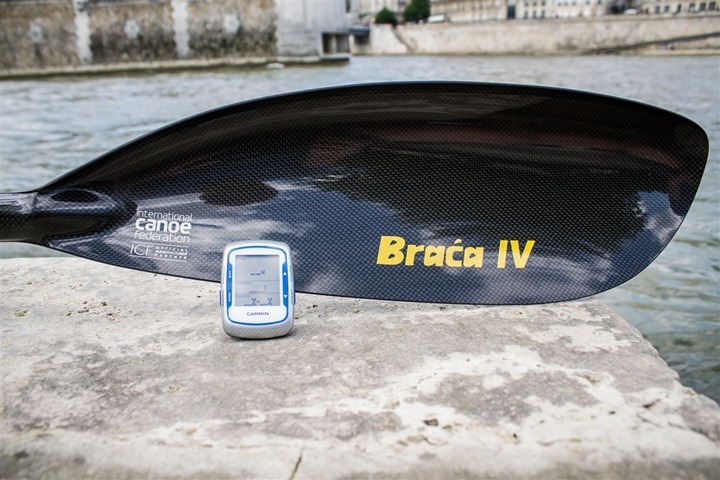
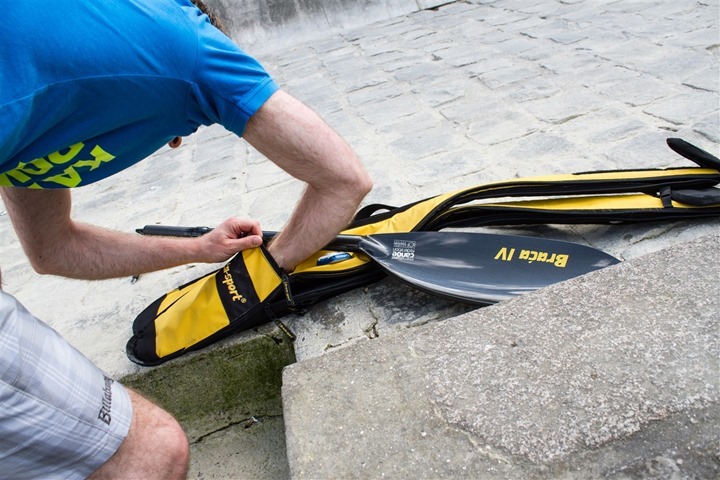

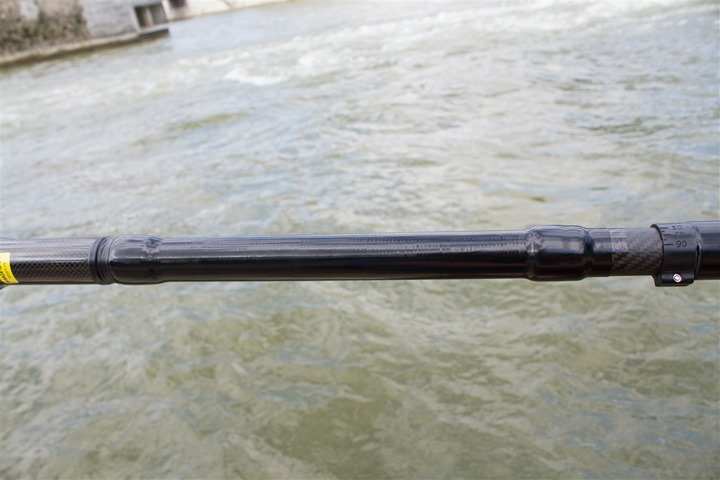


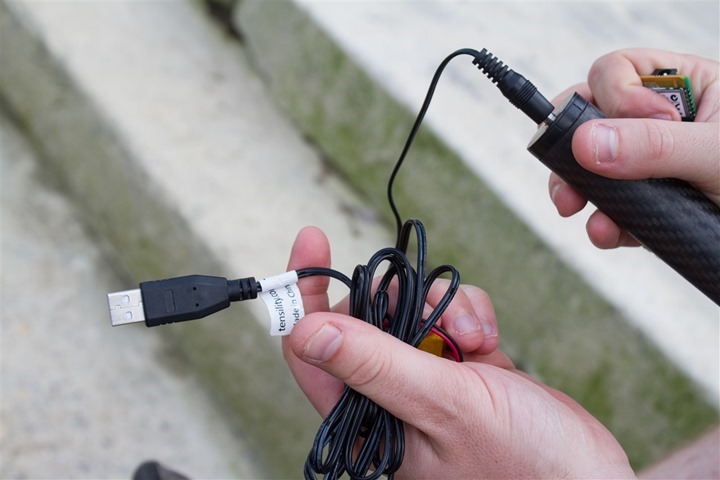
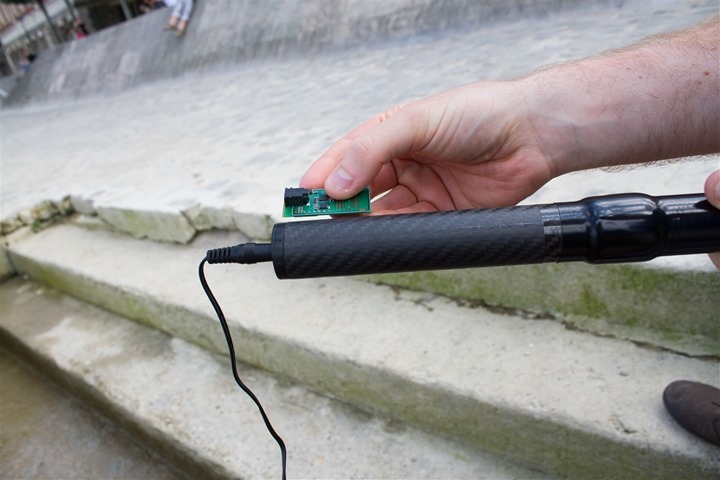
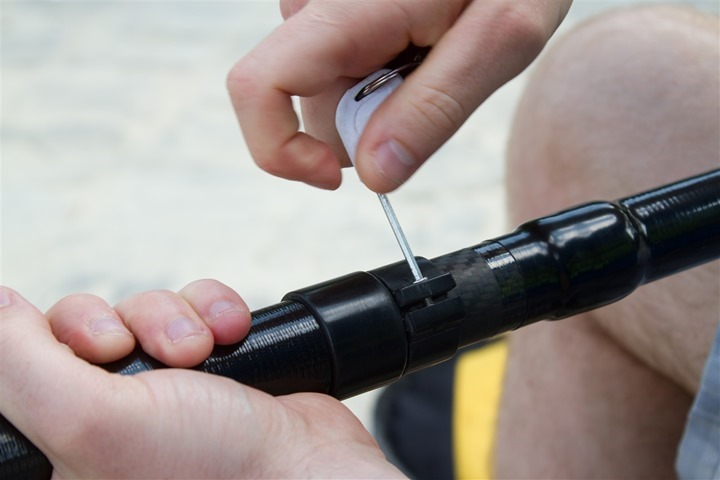

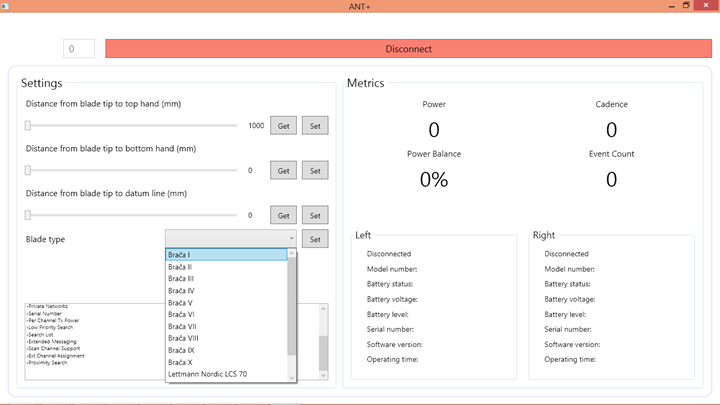
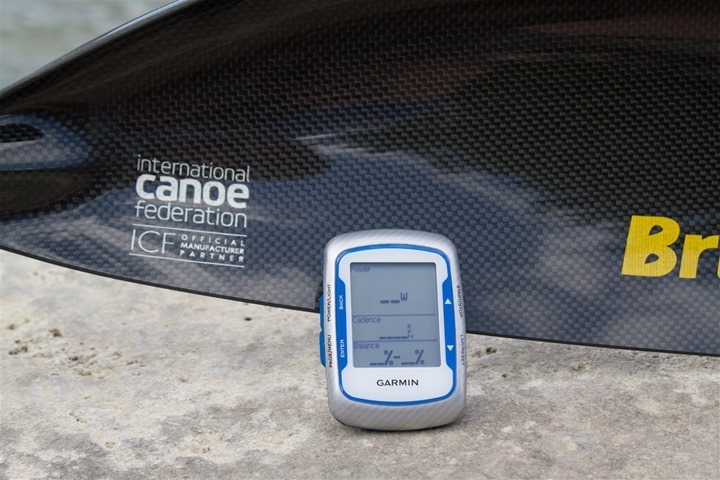
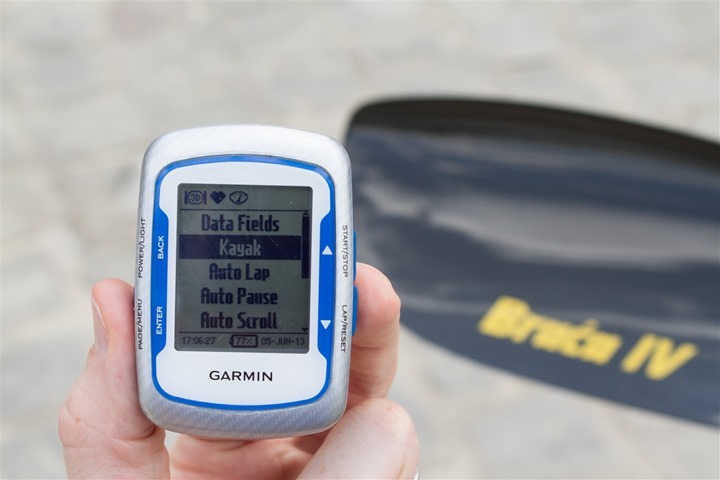





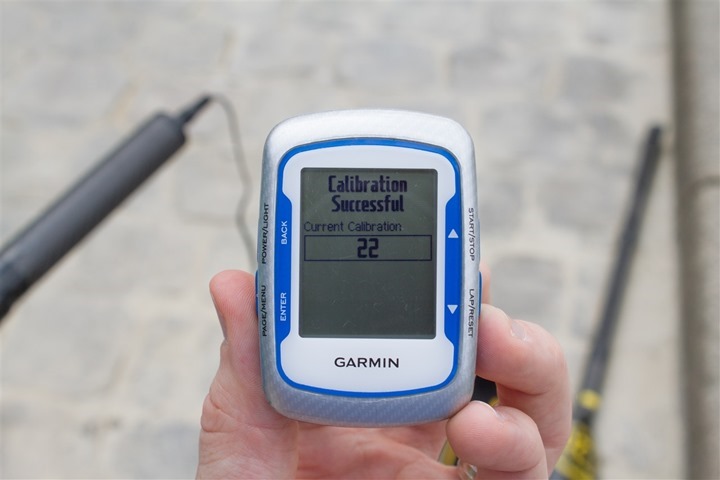
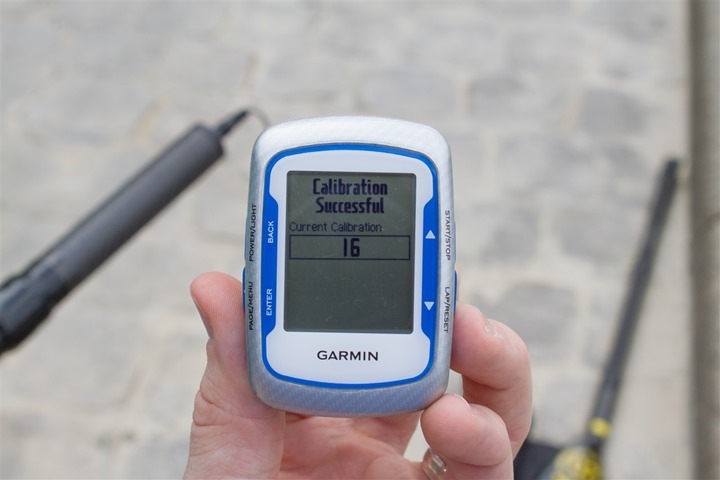
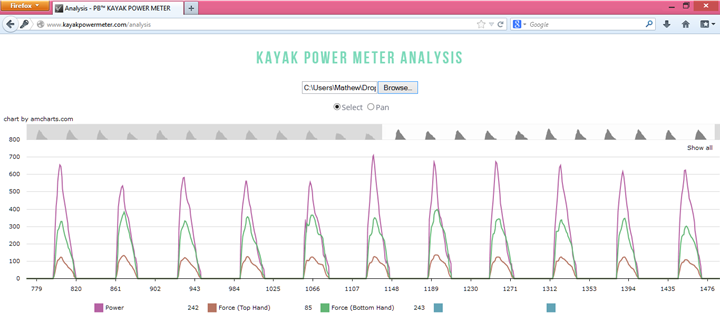
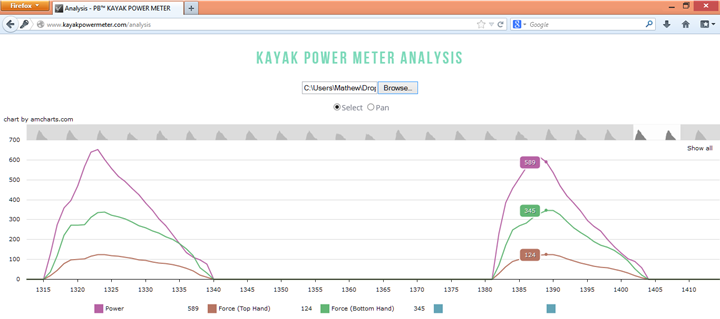
















I wonder if this product could also be modified to be used with Stand up Paddle boards (SUP) ?
Hi Dave – yes, this product could be easily modified to be used for Stand Up Paddling (SUP).
We are watching this space closely to see if there is a market for a SUP version of the Kayak Power Meter. We have had quite a large number of requests for such a product in the recent months.
I see a market for canoe racers.
How much weight does it add?
Similar technology already exist for the paddling world. Check out merlingear out of Australia. It’s designed for dragon boat racing but could easily modified for competitive paddling (i.e c1).
Hi Erik – it adds approx. 70g (i.e. the Kayak Power Meter split-shaft is overall 70g heavier than a typical Braca split-shaft).
One of the major focuses of the post-London 2012 revamp of the product was to reduce the weight of the system to a minimum (whilst increasing the battery life).
Another major focus was to change the design of the electronics to make the system suitable for ‘canoe racers’ i.e. a paddle with a single blade. We are releasing the Kayak Power Meter for kayakers to begin with, but it is very much our intention to release a version (Canoe Power Meter) for canoeists in the near future. We are in close communication with the Canadian Sprint Canoe team and they have offered to assist us with making the transition to canoeing.
Very cool device. Having used my 910xt for lots of kayak training in the last year I really wish Garmin would release some way of being able to customise the accelerometer (or a specific kayaking profile). I am sure that in the same way it does swimming stroke analysis it could easily do kayak stroke cadence. You can get an ant+ cadence sensor that clips onto the paddle but surely the inbuilt sensor would be adequate?
Hi Ray,
Question for you. If I understand correctly, power meters on bikes use rpm (angular velocity) and force measures to get their power. In this case, are they using the GPS for velocity or have they developed an interesting protocol using the stroke rate and some estimation of distance to get speed?
Just curious from a sport sci perspective since that would influence errors.
Thanks!
I’d assume they have an accelerometer to get stroke rate.
Hi Nick – An accelerometer would make sense in this day in age, like Stages Cycling does. If they did do that, they would need distance per stroke to end up with velocity and then power per stroke. So, how are they getting distance then?
This was the one area they weren’t going to share specifics on. It sounds like it’s an accelerometer plus a bit extra in there (which they lump into the inertial sensor category).
The distance in the Garmin Connect example all comes from GPS.
I figured using the acelerometers they would be able to determine the path of the blade, or the angle that the shaft is moved through, knowing the length of the shaft would give distance that the blade has moved?
Also your question regards the strain gauge below, the pictures seem to show strain gauges embedded in the shaft?
This would work great with the new Suunto Ambit2 and Ambit2 S! Dive-watch quality waterproofing, cadence, power, HR, etc.
Indeed, it would work quite well with the Ambit2’s.
Somehow they can make this concept work using carbon fiber whereas Stages hasn’t gotten there on the cycling side yet. Maybe the length of the lever arm in this application makes a difference compared to fairly short and stiff crank arms.
Hi Larry – what makes you think they put gauges on the carbon fibre? I am not saying they didn’t. They say the shaft is carbon fibre but I don’t think they mean the part that is instrumented. It looks very different to me than the paddle shaft.
Maybe Ray knows? Or, can give us a best guess?
If anyone knows how to instrument Carbon Fibre, I’d love to know who can do it or how.
Stages never said they couldn’t do carbon fiber. They just said it’s more difficult, specifically they it’s more difficult because each implementation can be significantly different in how it reacts to stress. I’d suspect with the Kayak PM, they are controlling the number of variables (read: shafts) to just a couple, thus making it easier (if they are indeed measuring on carbon fiber).
Scott – Good point. Would be interesting to learn more. Is the problem with carbon fiber itself or because parts can be engineered with such unique characteristics?
Great looking tech but I will have to wait for the Mac software version along with many others, I suspect :-)
Hi Kristen,
Would a fully functional Android app be a viable solution for you? Or are you firmly placed in the Apple ecosystem e.g. iOS/Mac?
How exactly did you mount the edge 500 to the kayak? I have a mio cyclo 105 (same mount system) and at the moment just have the plastic quarter turn mount zip-tied to duct tape across my kayak cockpit. I am looking for an option where I could move it between boats easily.
This is what I use for a watch – link to marsport.co.uk
Just back it up to some string to the portage bar under spray skirt
It’s a tiny bit different on the Mio, but I’d look to use the Garmin Quick Release Kit for the FR910XT/310XT, which comes with a watch strap that you can hook onto various spots on your kayak.
You could also use the same quick release kit mount set and glue the mount to your deck, but that’s a bit more risky.
Hi Fred,
We tend to use a similar ‘watch mount’ like what Alex has mentioned – it works well and can be easily switched between kayaks.
You can see the EDGE 500 located on the ‘watch mount’ in the following video:
link to youtube.com
Hello… i want to know more about the power meter in kayak and canoe….
What can i do?
Could you contact me with the persons or the company?
Thank you!
thanks for the review. Im looking at buying one for surfski
Hi! Were can I buy a shaft in Sweden ,Scandinavia? Regards Karl
Head over to https://onegiantleap.co.nz. The online store has free shipping for a very limited time.